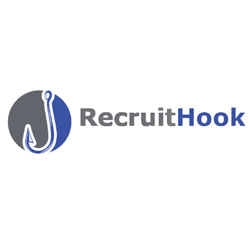Make no mistake: The coronavirus pandemic has thrust employers into uncharted waters. As they attempt to get back to business, “there are so many new rules of engagement that you’ve got to create a brand new playbook,” says Chris Santomassimo, a partner at Santomassimo Davis LLP, a New Jersey-based firm with offices in Philadelphia and New York, that provides a fully outsourced virtual legal department to companies for a fixed monthly fee.
In the past several months, a number of businesses in the Tri-state area have turned to Santomassimo Davis’ Outside General Counsel™ solution to minimize risk and keep employees safe amidst COVID-19.
Here are three strategies the Santomassimo Davis team recommends to manage a safe return to work.
Be as flexible — and fair — as possible.
Managers who are accustomed to a rigid management style must now adapt to consider employees’ unique challenges brought on by the pandemic. One example: Some employees may request to work remotely because they don’t want to expose a family member who might be at risk for severe illness from COVID-19. In cases like this, “I would encourage you make that accommodation,” Santomassimo says. “It doesn’t serve anybody’s purpose to drag somebody back into the office when they have legitimate fears.”
But it’s important to update your employee policies to cover temporary accommodations. One safe bet: Consult with your legal counsel to draft a new policy regarding work accommodations. Santomassimo Davis, led by Santomasssimo and employment law specialist William I. Greenbaum, is working closely with clients to update their policies to cover changes due to COVID-19. For remote employees, you may also need to add guidelines about who gets reimbursed for office expenses or who’s eligible for overtime. For all policy changes, follow this rule: “You need to show that you applied the same rules uniformly across the workplace,” Santomassimo says. “Treating everyone the same is extremely important.”
Create a safe, compliant return-to-work plan.
“Employers are facing a patchwork quilt of executive, state, and local orders that don’t always fit together well,” Santomassimo warns. An important first step: Implement both the Occupational Safety and Health Administration guidelines and the Center for Disease Control’s safety and hygiene practices pertaining to COVID-19. The CDC guidelines include allowing for social distancing and providing employees with personal protective equipment when required.
Santomassimo says his firm counsels clients to take the additional step of polling employees daily to determine if they’re experiencing symptoms of COVID-19 or if they’ve recently been exposed.
It’s vital to develop an action plan for when an employee tests positive for coronavirus. Employers should send the employee home to quarantine for a minimum of 10 days; vacate and disinfect the workplace; employ contact tracing; and report infections to OSHA. “You want to be able to assure your other workers that the workplace is as safe as possible so they will feel comfortable coming back,” he says.
Manage risk before implementing layoffs.
Businesses that are experiencing significant revenue losses due to the coronavirus pandemic are weighing some stark options, including implementing layoffs, furloughs or slowdowns.
Employers should keep this warning top of mind: “You need to demonstrate that you made decisions about who will be affected in a way that was non-discriminatory,” says Santomassimo. Sit down in advance with your HR team and legal counsel to document how you’re making the decisions, who will be affected, and why.
Keep in mind that conducting layoffs or furloughs may trigger a requirement to provide advance written notice to employees and certain government agencies under the federal Worker Adjustment and Retraining Notification Act (WARN Act). Santomassimo recommends working with a legal advisor to evaluate whether there’s a WARN trigger that will determine how much notice you’ll need to give employees.
As you’re implementing staff reductions, Santomassimo reminds employers to revisit their anti-retaliation policies protecting whistleblowers and carefully document complaints. A September report from the U.S. Department of Labor’s Office of Inspector General reveals that workplace safety whistleblowers’ claims have spiked during the pandemic.
“Safety complaints should be taken seriously and investigated,” Satomassimo says.
By taking these measures, you’ll be demonstrating the company’s commitment to creating a safer workforce. “In everything you do, employees need to know that ‘safety first’ is your number-one focus,” Santomassimo says.









Comments are closed